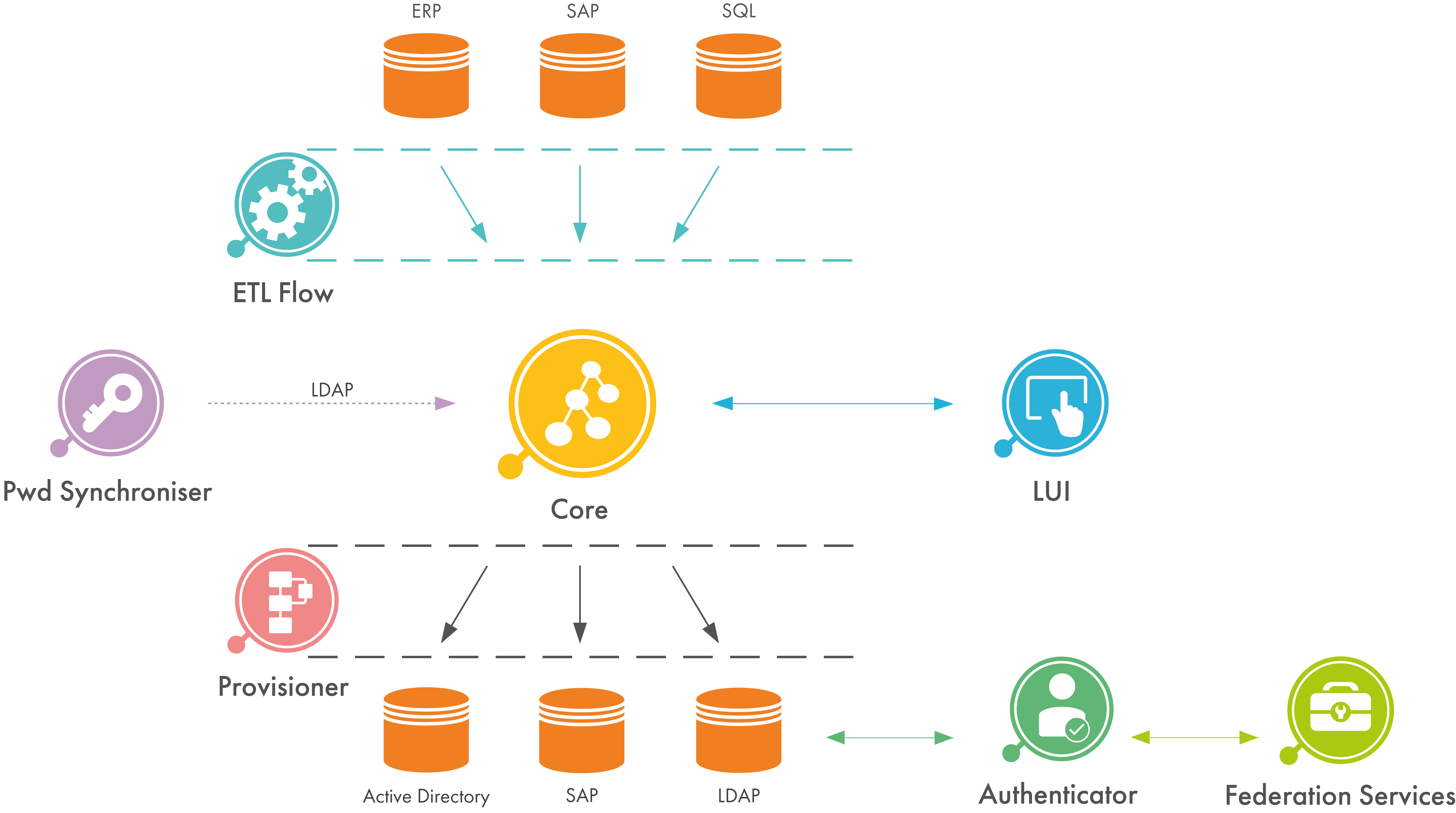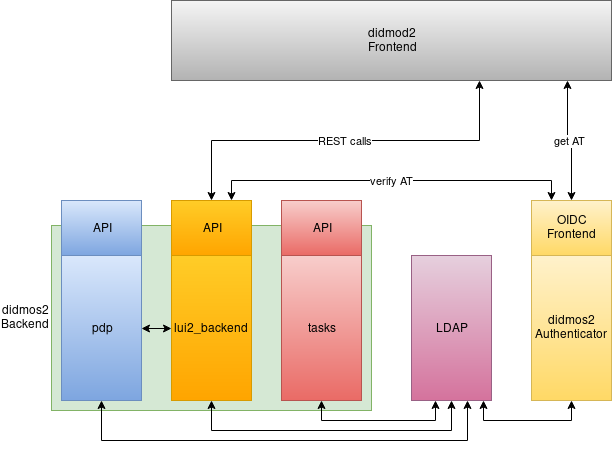didmos Core consists of several components which manage objects, users, groups as well as their respective configuration, potential deletion and changes of such objects. As most other didmos modules, Core is written in Python entirely while relying on the contemporary and popular Django framework. This way, developers are able to partially automise the writing process for app codes, which not only simplifies development but also significantly speeds up the process – without loss of quality.
Core comes with SCIM-v2 endpoints for administration and retrieval of access control information (Policy Decision Point) as well as an implementation of multi-level workflows which were realised as REST APIs.
As data back-end, didmos Core uses an LDAP server, which functions as metadirectory. Ultimately, this makes didmos Core a webservice interface to write in and read the metadirectory. The advantage over direct LDAP access is that additional business logic can be implemented. As SCIM is significantly easier to implement vis-à-vis LDAP, it is also possible to access lean JavaScript-based front-ends with didmos Core.





